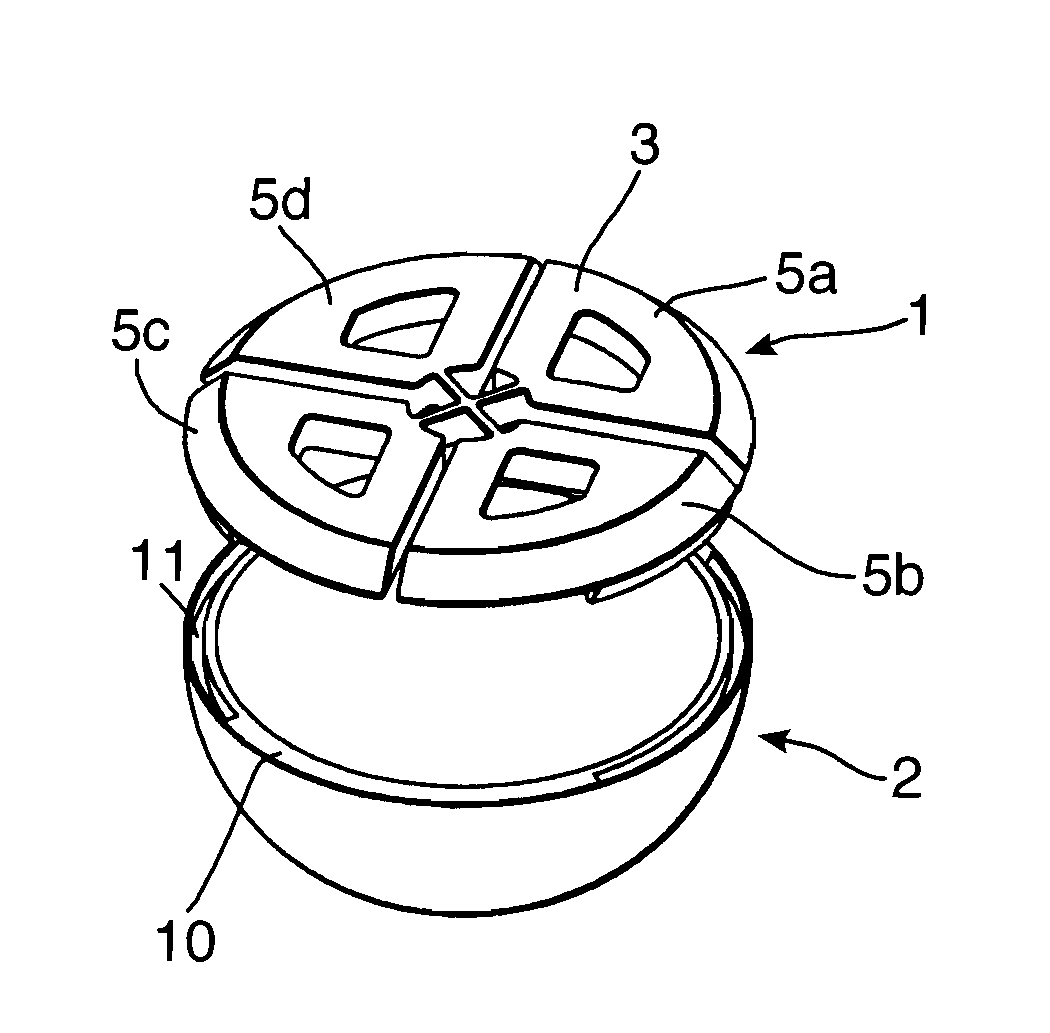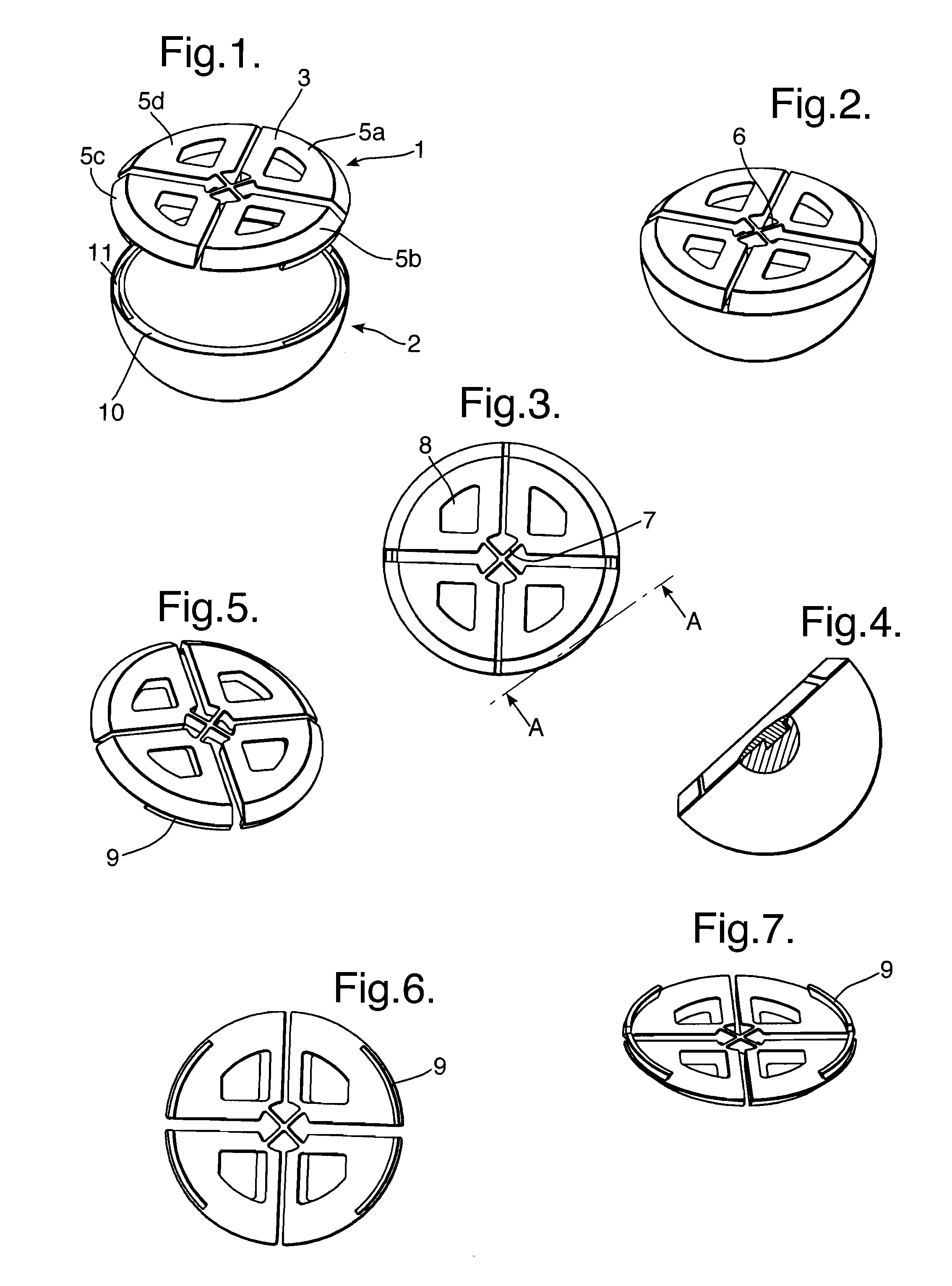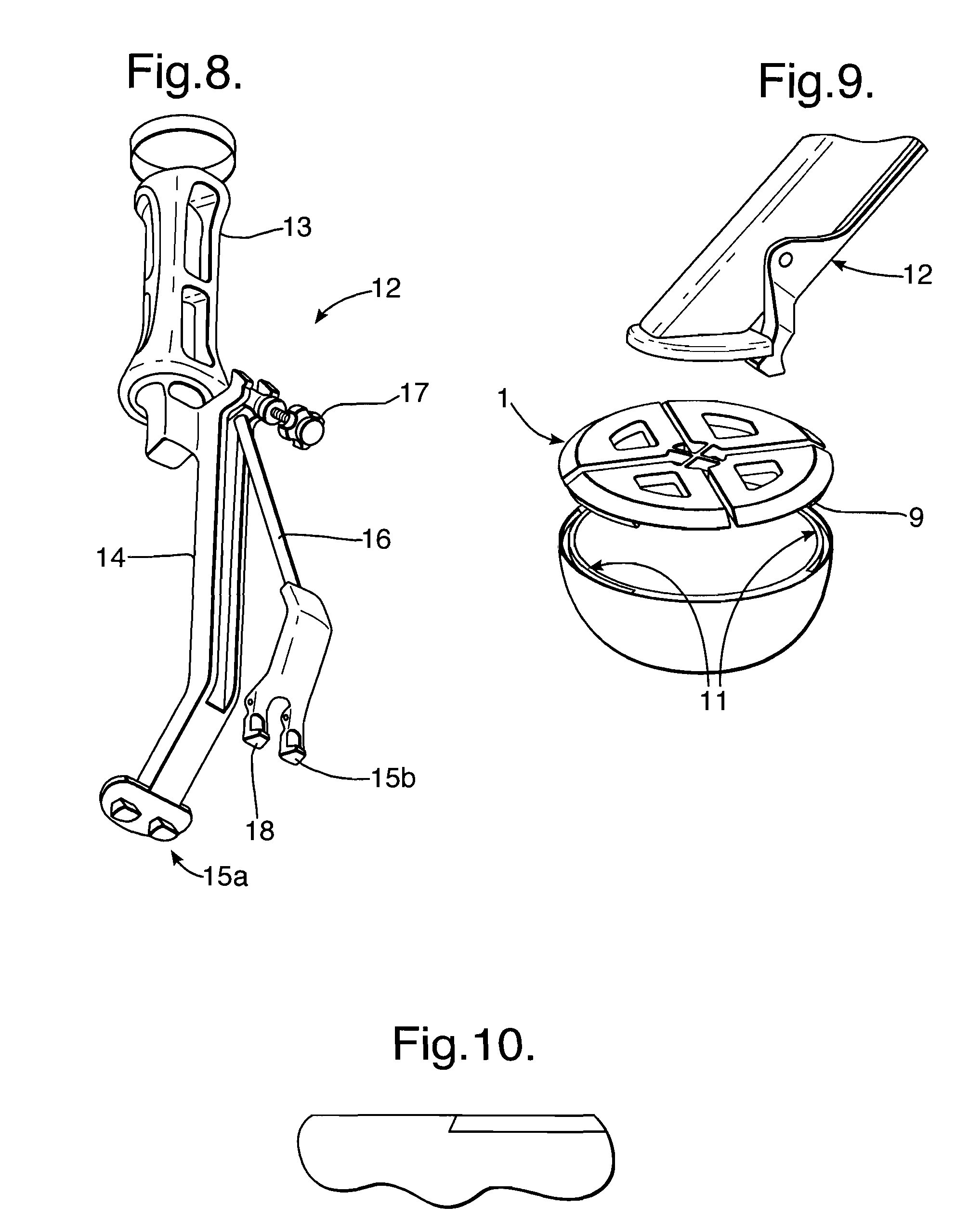Cap and activation tool
a technology of activation tool and prosthetic implant, which is applied in the field of prosthetic implants, can solve the problems of affecting the safety of patients, the inability of the tool to generally grip the wall, the damage of the insertion tool, the metal shell or both, and the cost implications of hospitals, so as to reduce the tendency to distort the sector, improve the control provided over the foot, and increase the ease of connection and removal.
- Summary
- Abstract
- Description
- Claims
- Application Information
AI Technical Summary
Benefits of technology
Problems solved by technology
Method used
Image
Examples
Embodiment Construction
[0082] As illustrated in FIGS. 1 to 7, a cap 1 is provided for an acetabular cup prosthesis 2. The cap comprises an impaction plate 3 comprising four sectors 5a, 5b, 5c and 5d. Each sector is connected to a connection point 6 via flanges 7.
[0083] Each sector includes an aperture 8 which provides means for connecting the cap to an insertion tool.
[0084] As illustrated most clearly in FIG. 6, the gaps between the sectors are not equal.
[0085] Lugs in the form of ribs 9 extend from each of the sectors. As illustrated in FIG. 7 the ribs are angled inwardly. These ribs are shaped to interact with dovetailed edges to corresponding grooves 11 in the rim 10 of the cup 2. The dovetailed edge is illustrated in FIGS. 4 and 10.
[0086] One arrangement of a tool 12 is illustrated in FIG. 8. The tool 12 comprises a handle 13, an arm 14 and a foot 15a and 15b. The foot comprises a fixed component 15a and a movable component 15b. The movable foot component 15b is connected to the arm 14 by means of...
PUM
 Login to View More
Login to View More Abstract
Description
Claims
Application Information
 Login to View More
Login to View More - R&D
- Intellectual Property
- Life Sciences
- Materials
- Tech Scout
- Unparalleled Data Quality
- Higher Quality Content
- 60% Fewer Hallucinations
Browse by: Latest US Patents, China's latest patents, Technical Efficacy Thesaurus, Application Domain, Technology Topic, Popular Technical Reports.
© 2025 PatSnap. All rights reserved.Legal|Privacy policy|Modern Slavery Act Transparency Statement|Sitemap|About US| Contact US: help@patsnap.com



